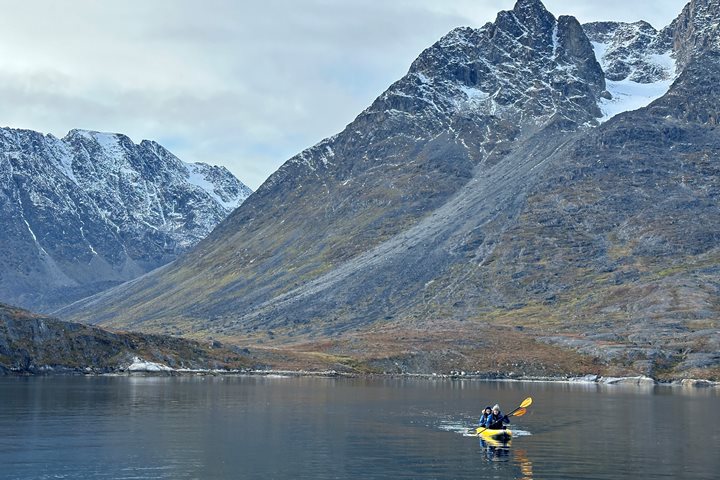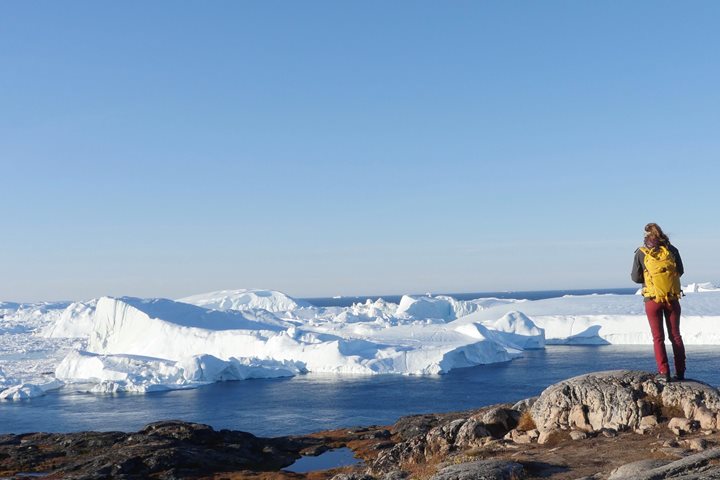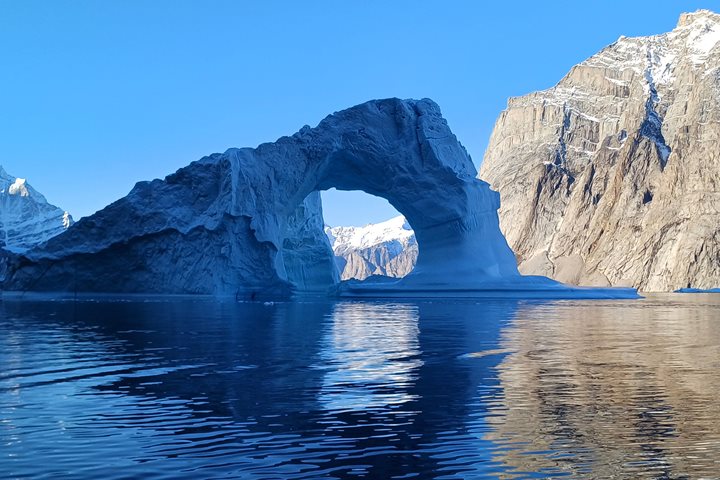After a night’s voyage from Davis Strait through Baffin Bay, we awoke to find ourselves in a sky of lowering gray and misty rain, riding on seas of light green and azure. Occasional icebergs seemed preternaturally bright, catching more sun than seemed available. Seabirds, such Sabine’s gulls, and harp seals, slid by in National Geographic Explorer’s wake.
At noon we anchored off the hamlet of Pond Inlet. Pond Inlet is unusually large for a village located this far north. Fifty years ago, the government located a boarding school here and sent the children from the smaller communities to live in dormitories. The parents could not bear the separation and moved here to be near their families, effectively condensing dozens of smaller villages into this hamlet. Archaeologically and historically, it has been the site of Thule and Inuit habitation for hundreds of years, and was the site of a Hudson’s Bay trading post, whaling station, and the first Royal Canadian Mounted Police station in the region. Pond Inlet hunters are renowned for their abilities for catching narwhale.
This was our first stop in Canada. While we waited for the arcane rituals of government clearances to be completed, a clean cold westerly breeze cleared away the mists, leaving blue skies for our afternoon ashore. We split into groups and drove the Zodiacs to the beach for a wet landing to either hike a few miles up the beach to see some archaeological remains on a glacial bench near Salmon Creek, see the community with a local guide, or just explore. The community center put on a demonstration of dancing and traditional games.







